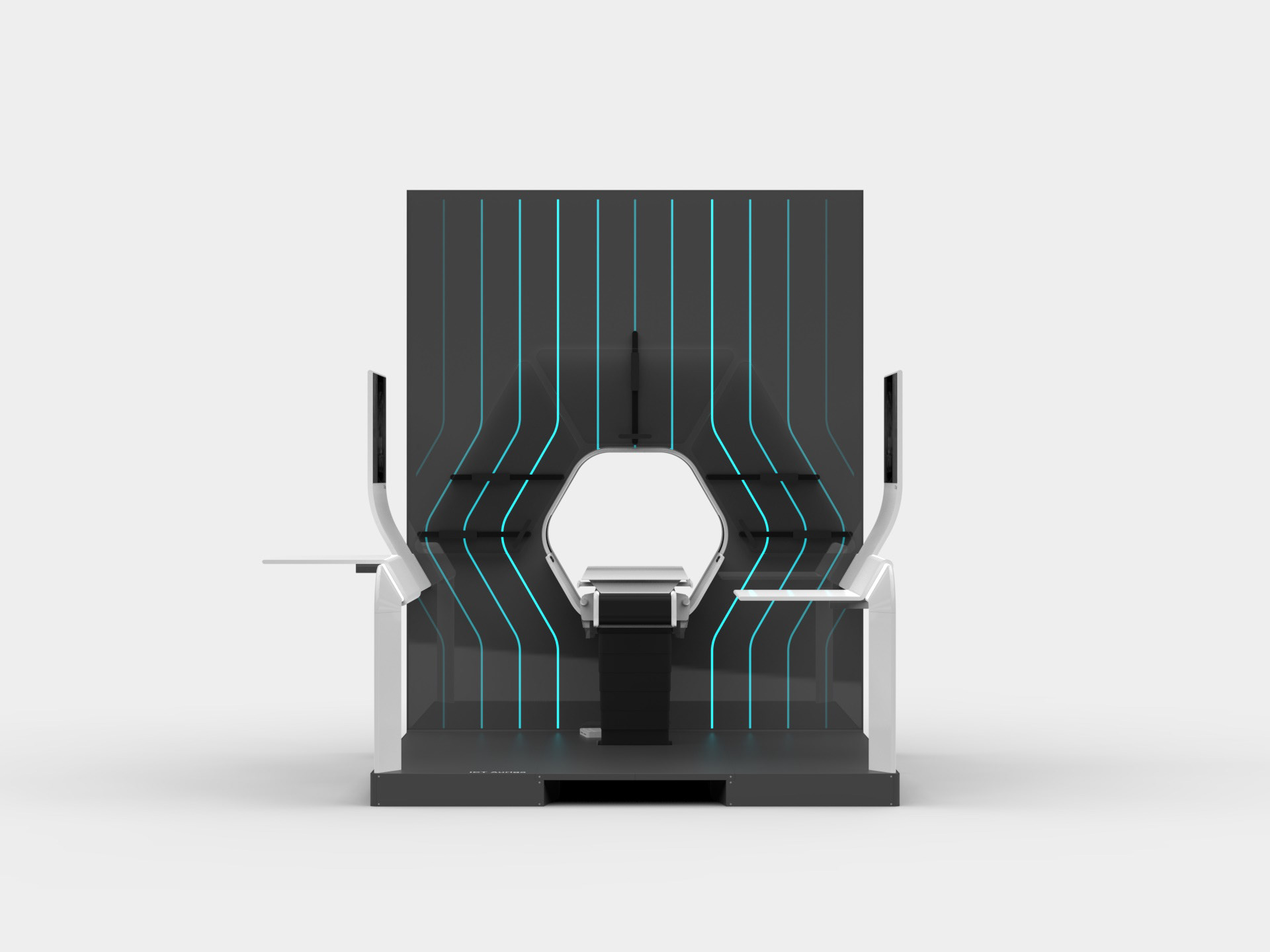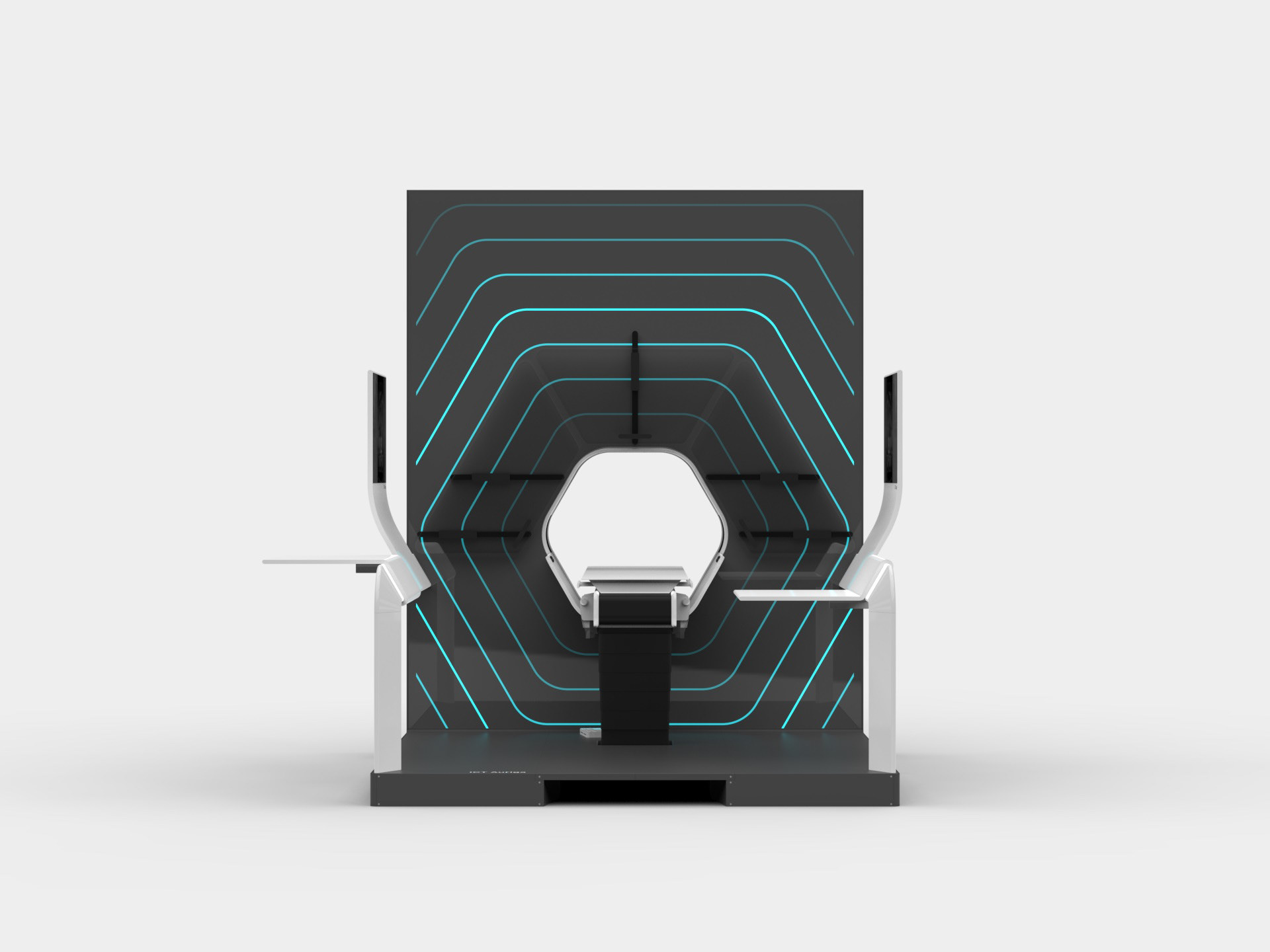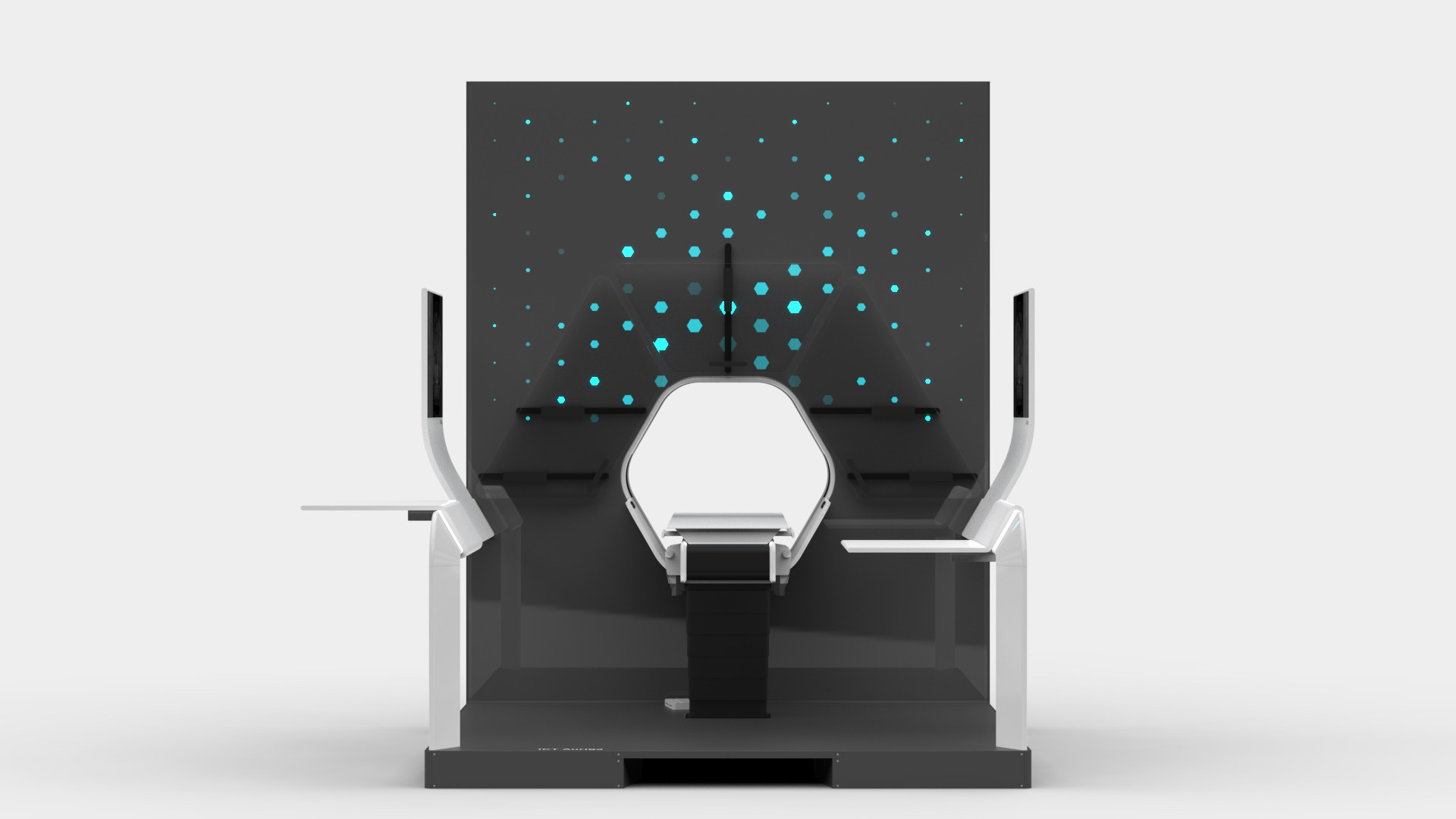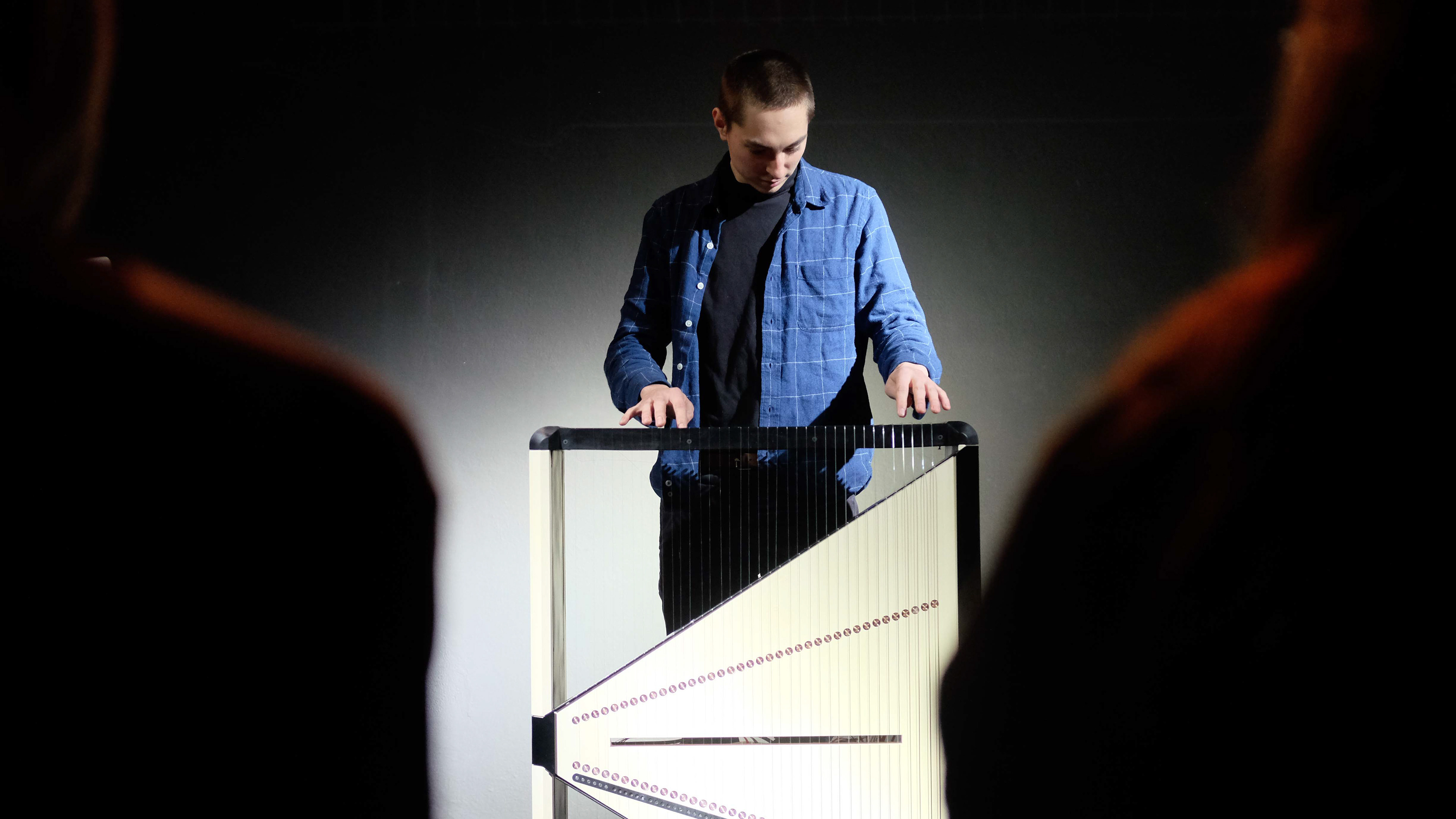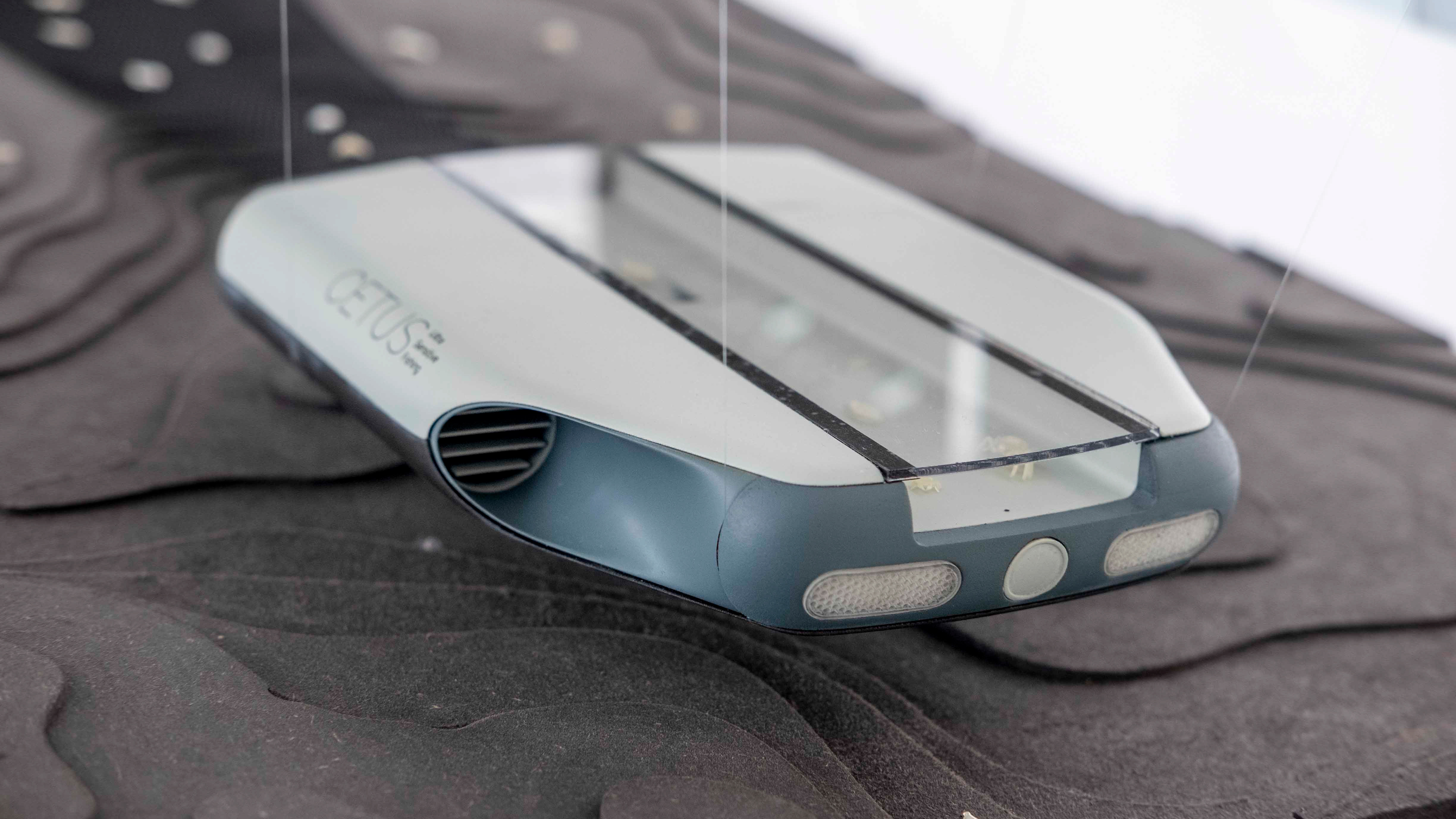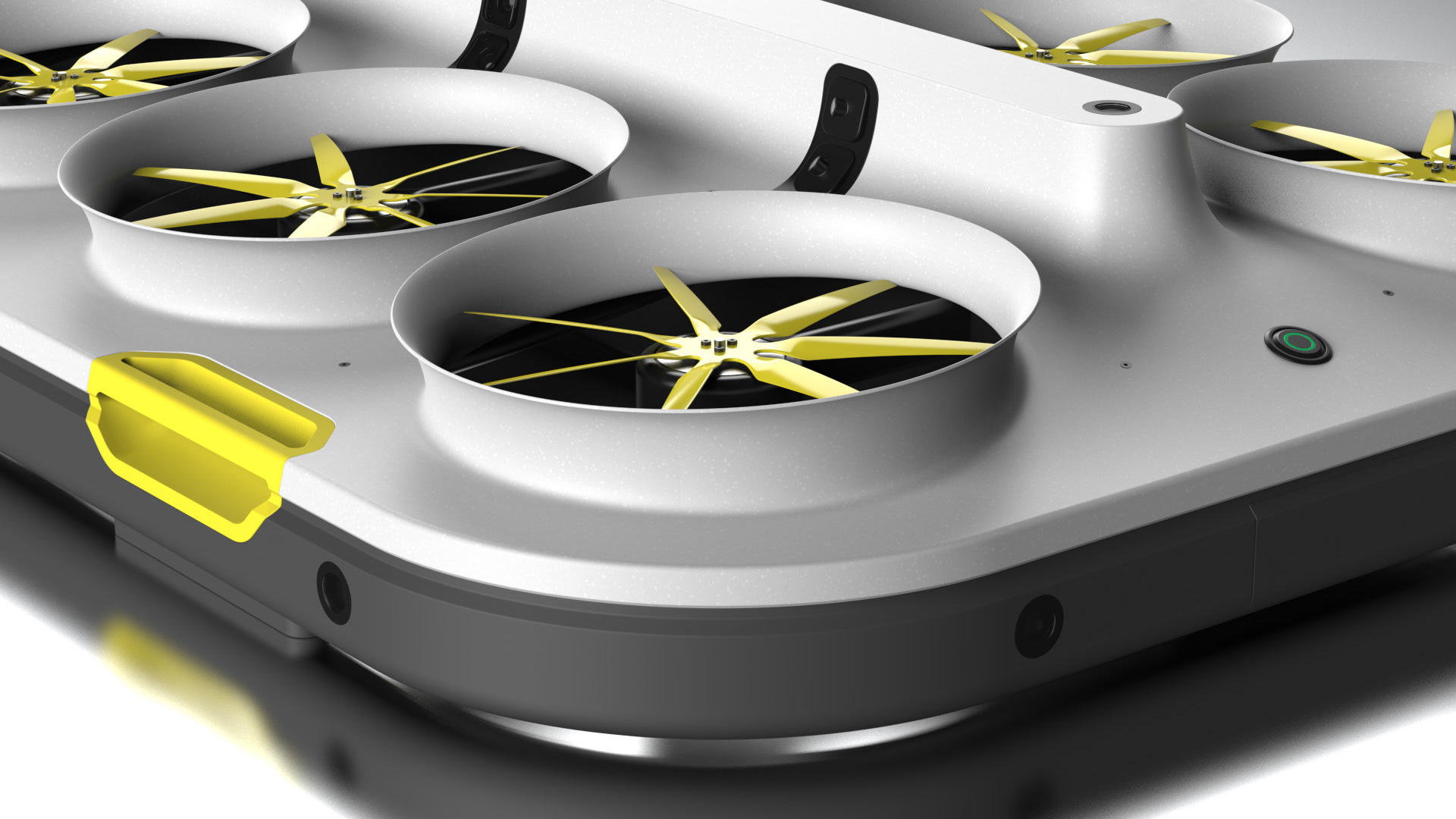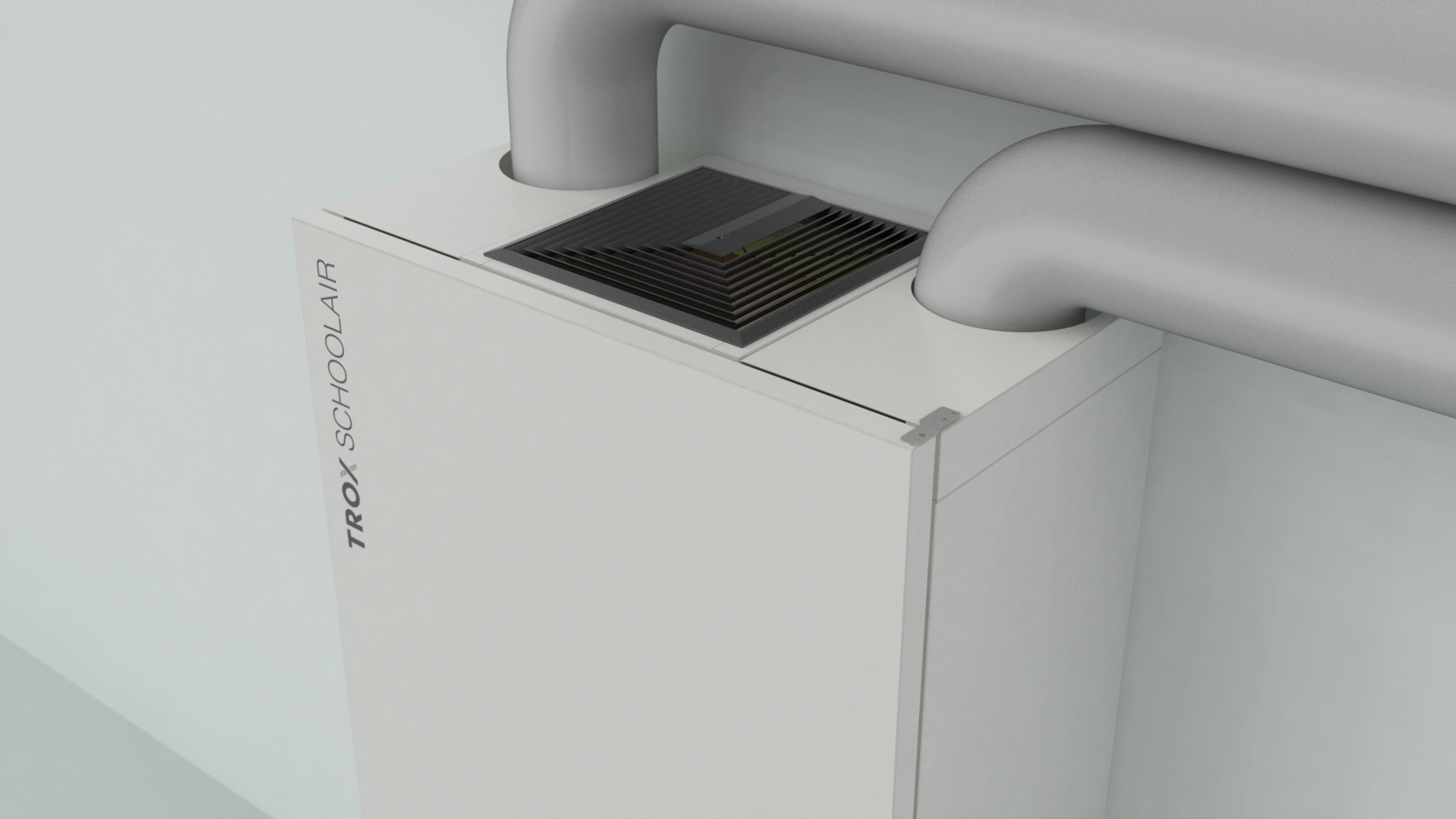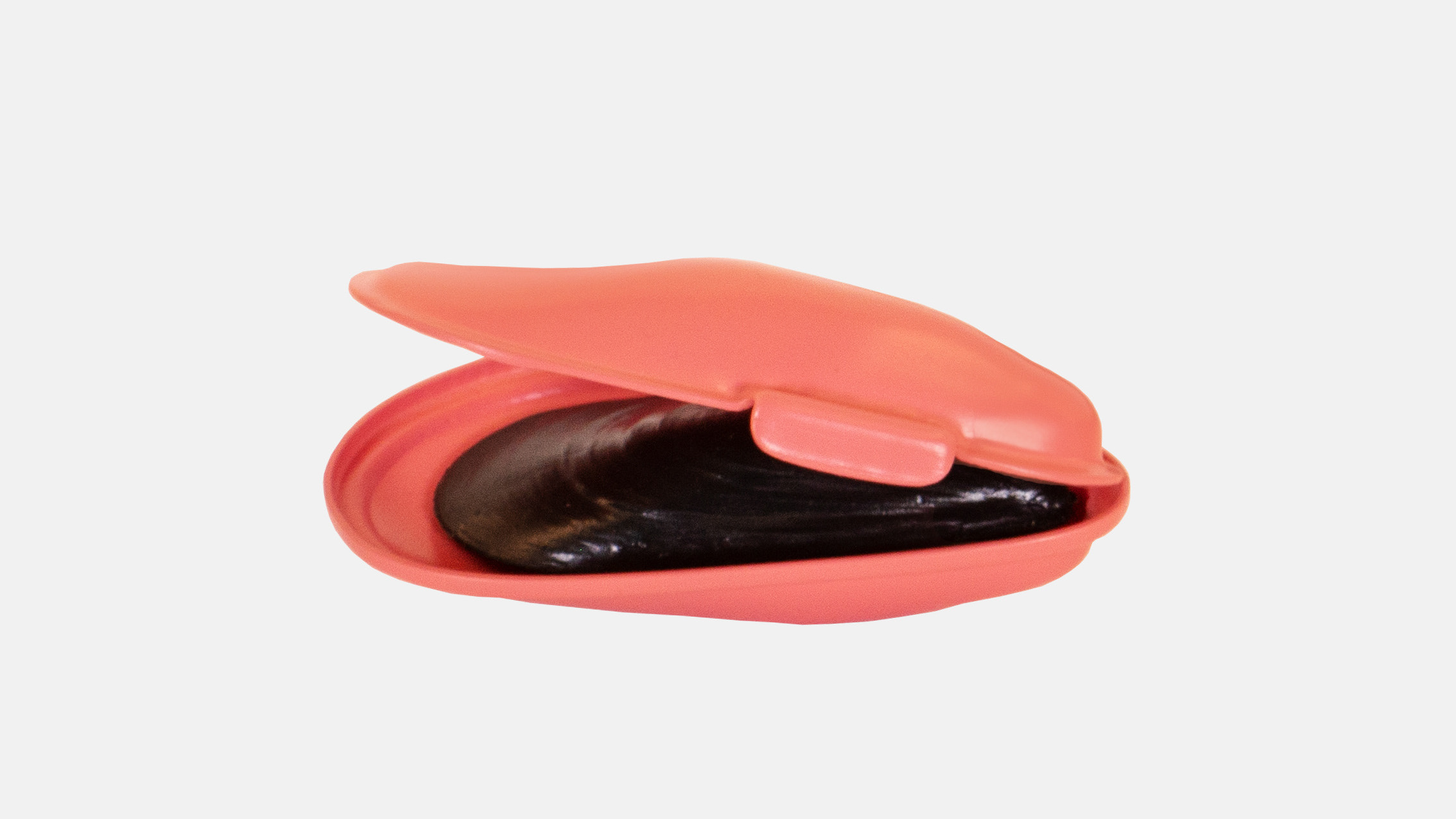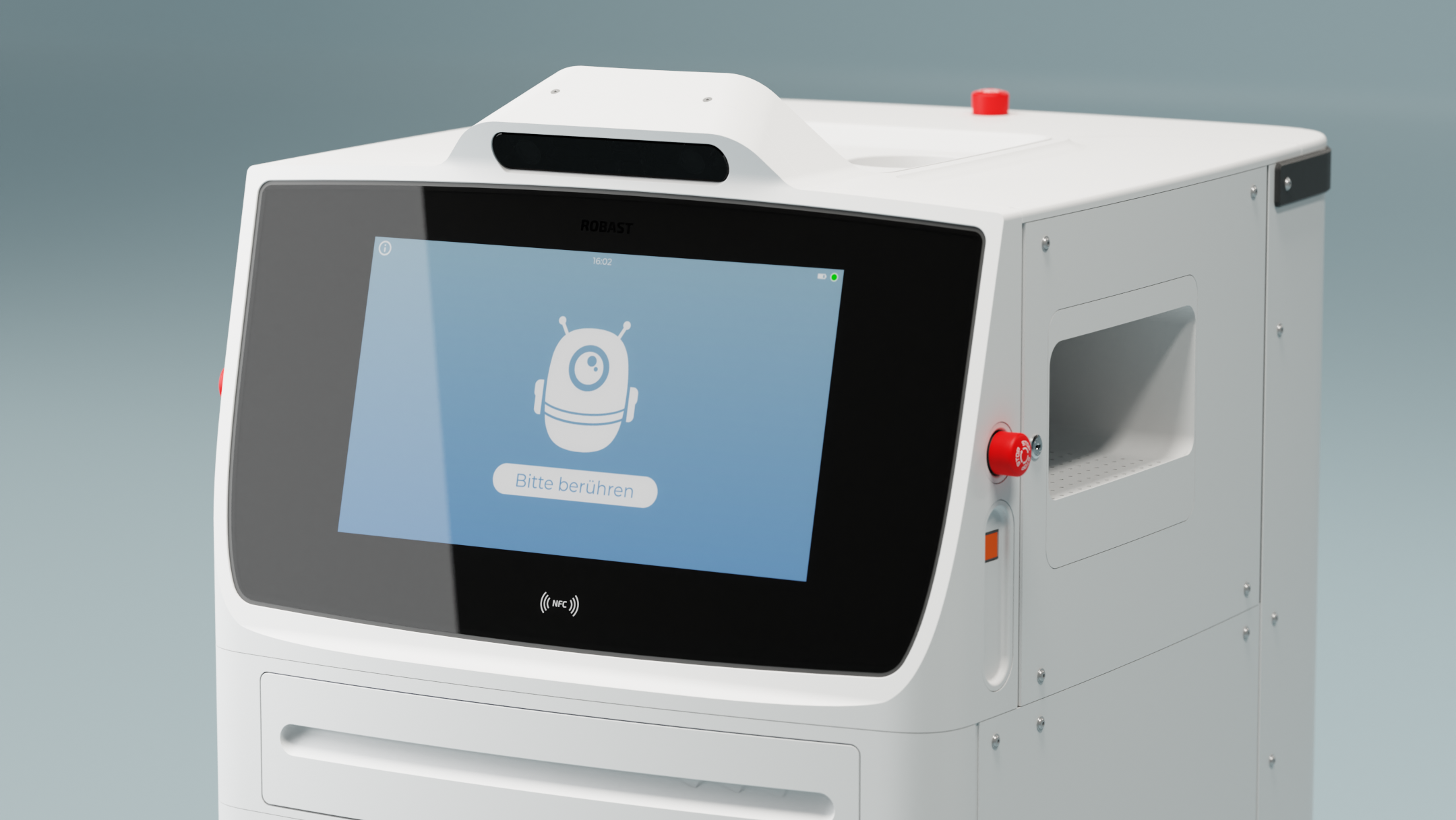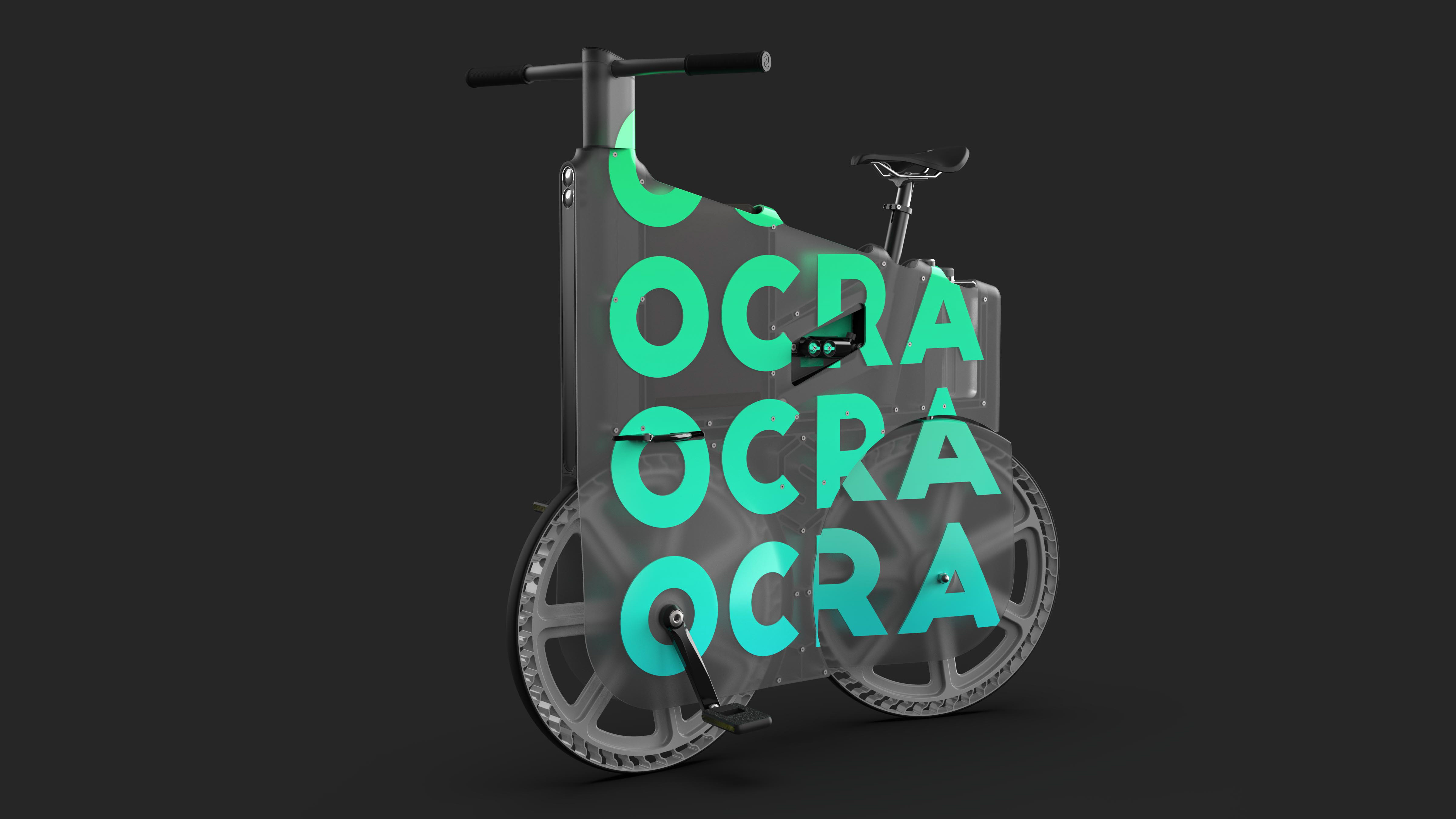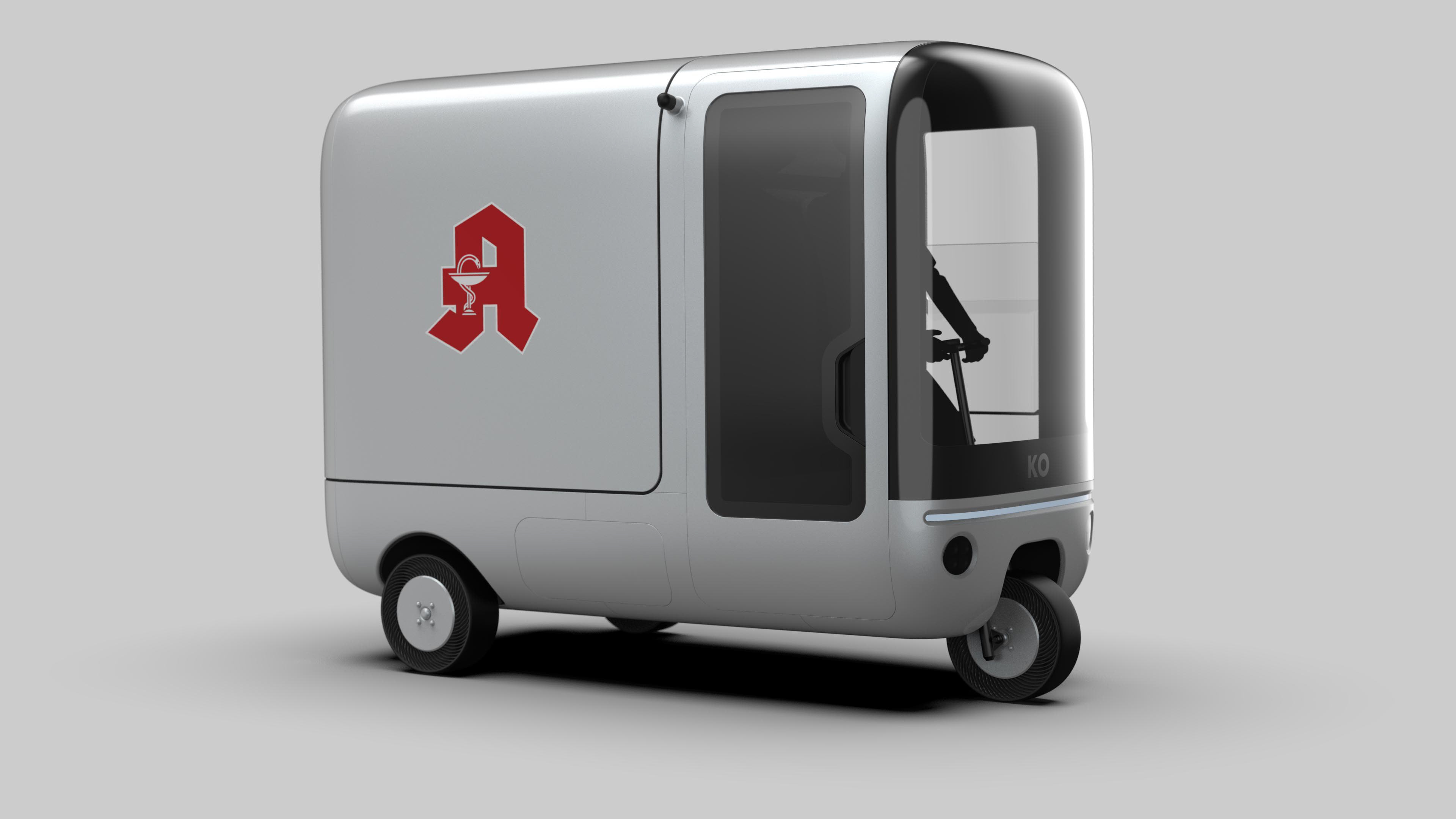Auriga is an architecturally inspired CT device. The gantry extends to the ceiling and becomes a spatial installation. This takes away its massive “machine-character” and makes it part of the room. The gantry height is individually adapted to the given space - individuality becomes part of the product. In order to enable right- and left-handed working, the overall construction is symmetrical and intervention from both sides is equally possible.
The central design feature is the hexagonal gantry opening. It provides space for the lamps and displays. The large fronts of the gantry offer space for a display of different coloured patterns and animations, which visualize the radiation. These can be individually selected and adapted together with the overall height of the gantry. The patterns pick up on the hexagonal shape of the gantry opening and set it off. To protect the interventionists from radiation, lead glass panels and a radiation protection tray are installed. The sliding lead glass panels allow individual adaptation to the patient and the interventionists working space. The tray serves to protect the abdomen and offers a lot of foot space as well as a front leaning aid for a safe stand.
/w Fiona Verhoeven, Philine Seaydell
#semesterproject
#medical equipment
#ct
#fusion360
#keyshot3d
BRIEF
Minimal-invasive CT-guided treatments of oncological diseases are now part of everyday clinical practice, but this is accompanied by an increase in radiation exposure for patients and medical staff. Currently, CT systems are used that were originally designed for diagnostic imaging, but whose requirements differ significantly from those for interventional applications. The aim of the project was to create room and equipment concepts for interventional CT scanners.
THERAPY PROCESS
Due to the new position and height of the gantry opening, the isocenter is shifted upward compared to conventional CT units. In order for the physician to operate as usual in the isocenter, his platform must also be shifted upward by this height difference. A review in VR showed that a platform height of 15cm provides the optimal comfort for the interventionalist.
The patient bench can compensate for the height difference of the isocenter by its height adjustability. Even in transport mode, the patient bench can be inserted into the opening without collision. Thus, no elevation is necessary for the couch.
The patient bench can compensate for the height difference of the isocenter by its height adjustability. Even in transport mode, the patient bench can be inserted into the opening without collision. Thus, no elevation is necessary for the couch.


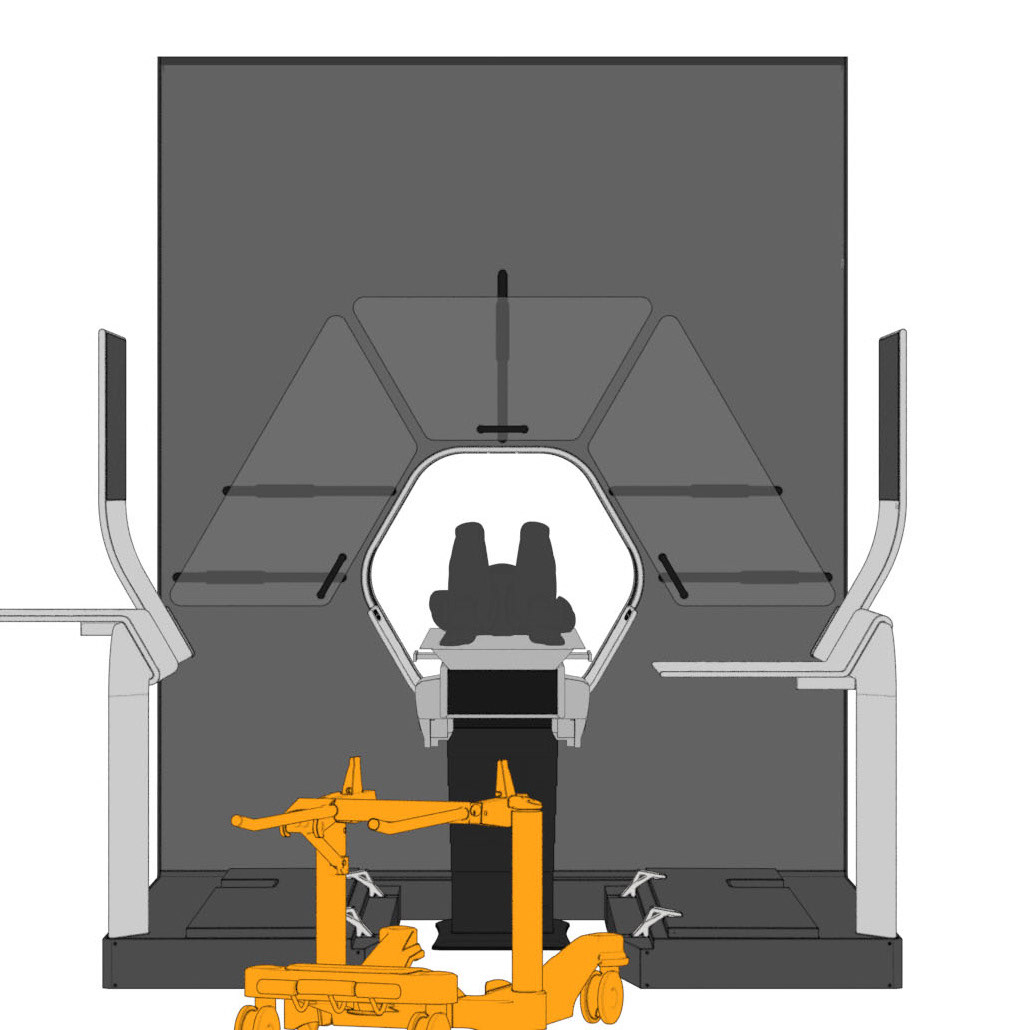

INTERFACES
For direct inspection of the CT scans, there is one large overview screen per side and a small detail screen inside the gantry. The control interface of the gantry is located inside the lower trough, which protects the abdomen of the interventionists from radiation. In addition, there is a foot pedal on the floor that allows hands-free activation of the CT imaging.
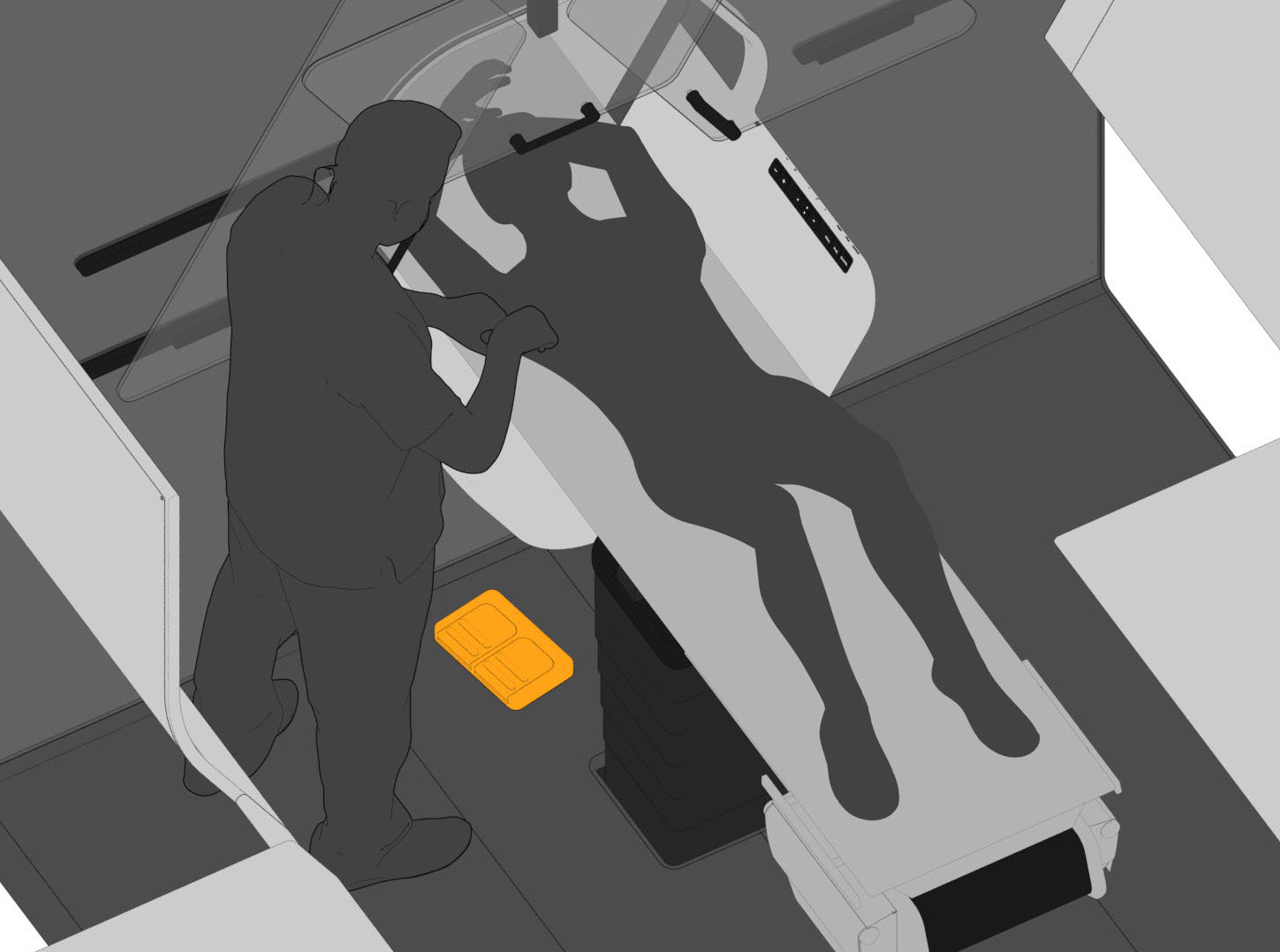
Foot Pedal
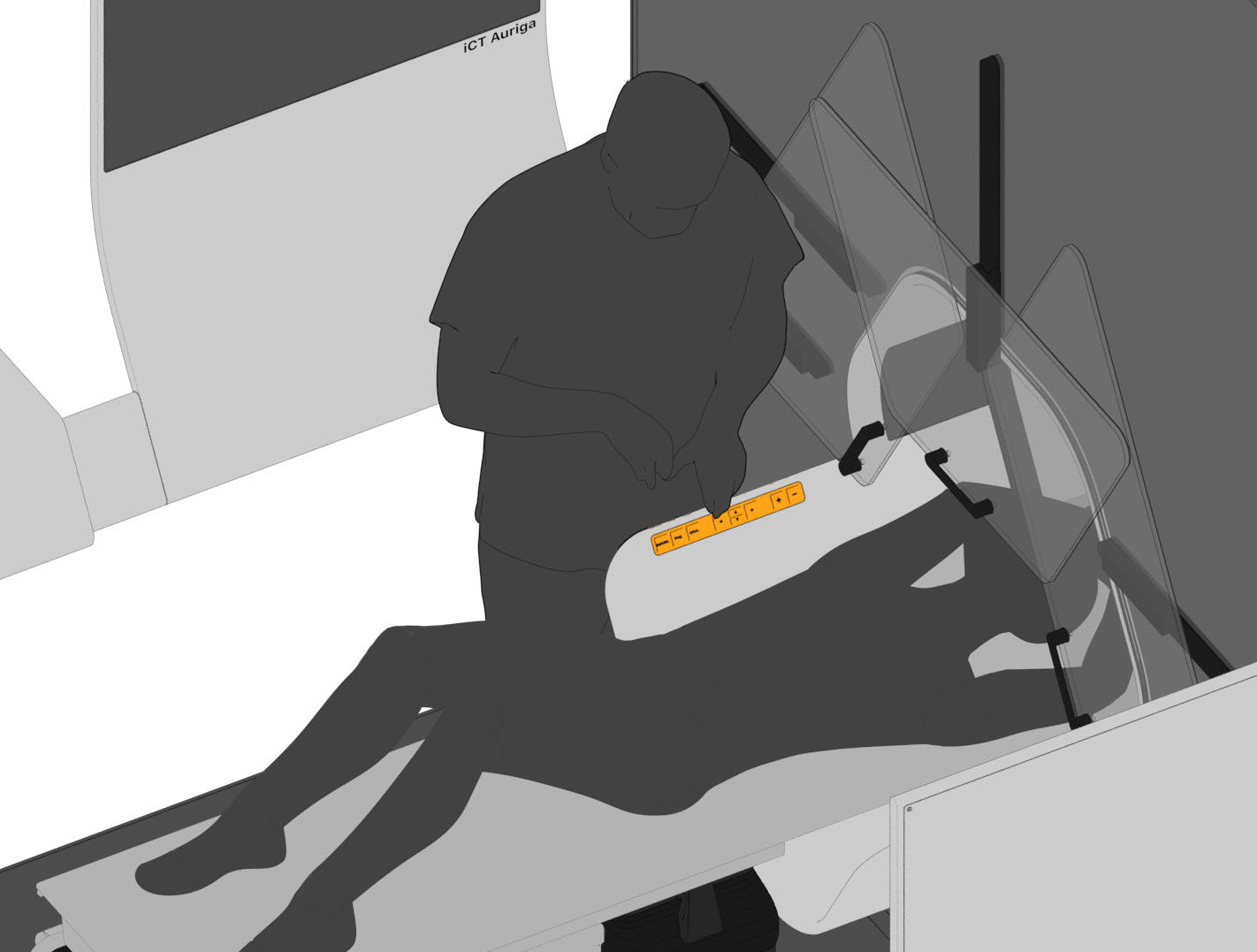
Silicone Button Interface
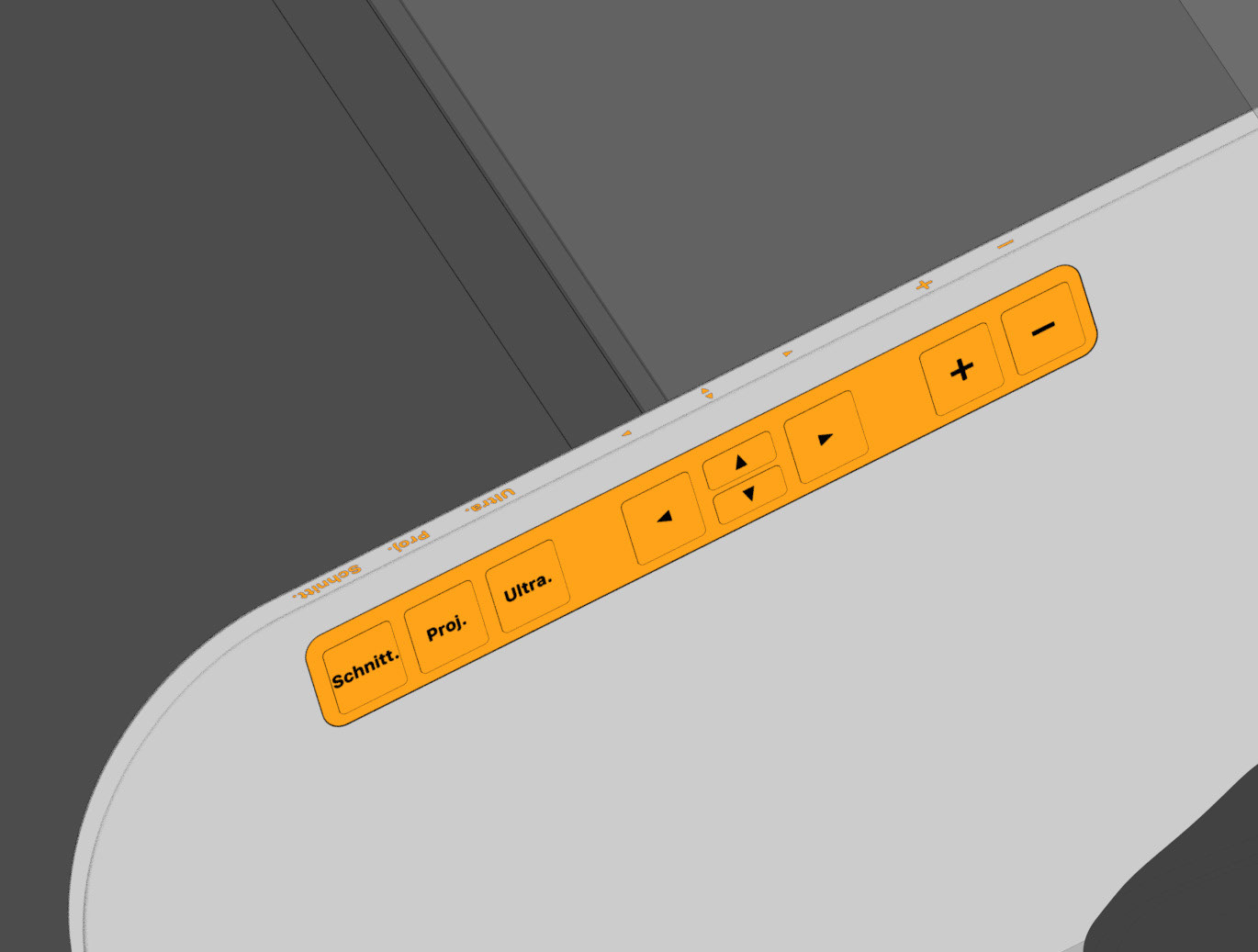
Silicone Button Interface
ERGONOMICS
Various tables can be suspended on the railing. This enables the individual positioning of surgical instruments and devices. To relieve the interventionists, it is also possible to lean against the railing, similar to a standing seat in a gondola or tram. In addition, the railing offers protection against a potential fall from the platform.
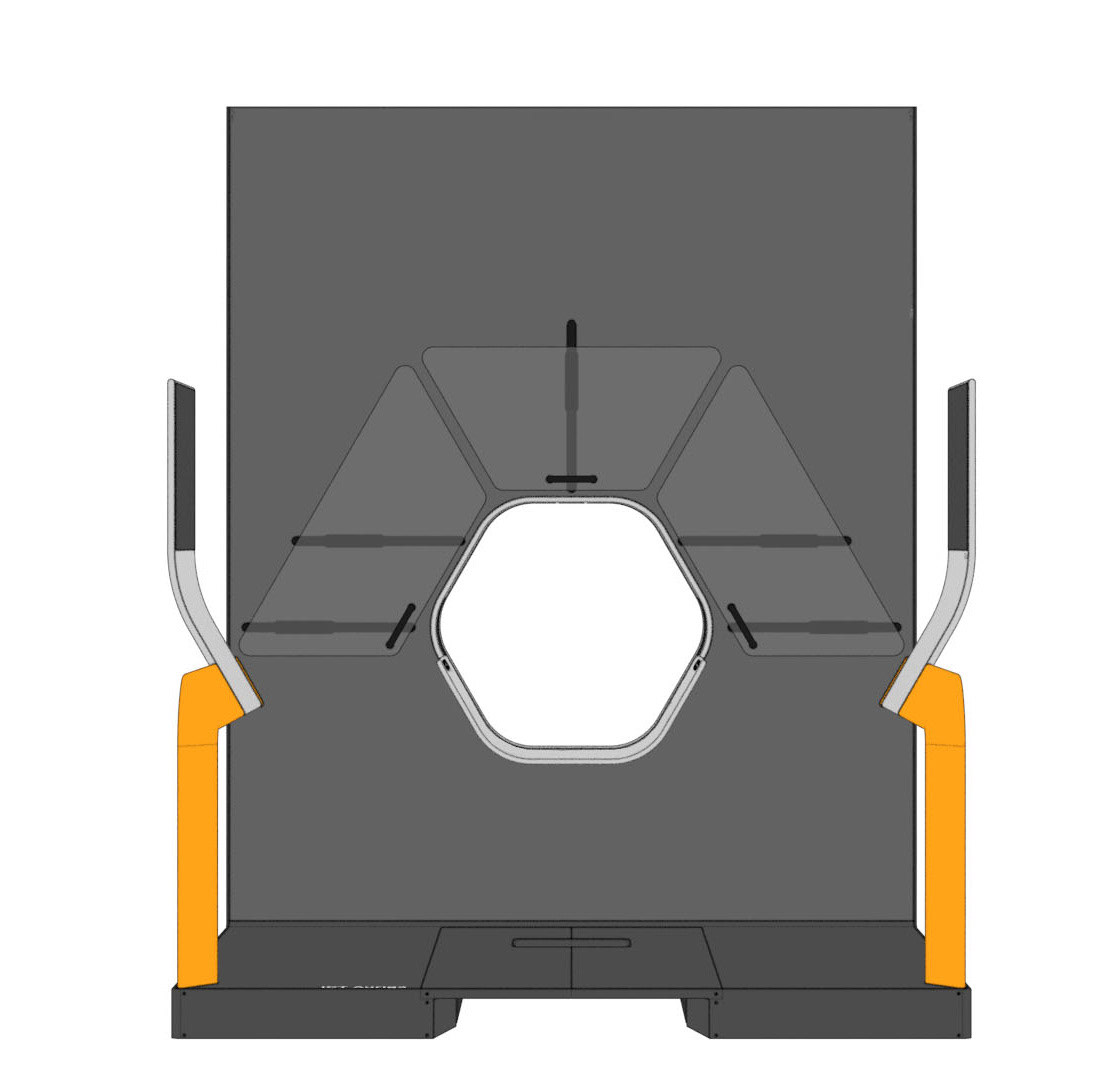
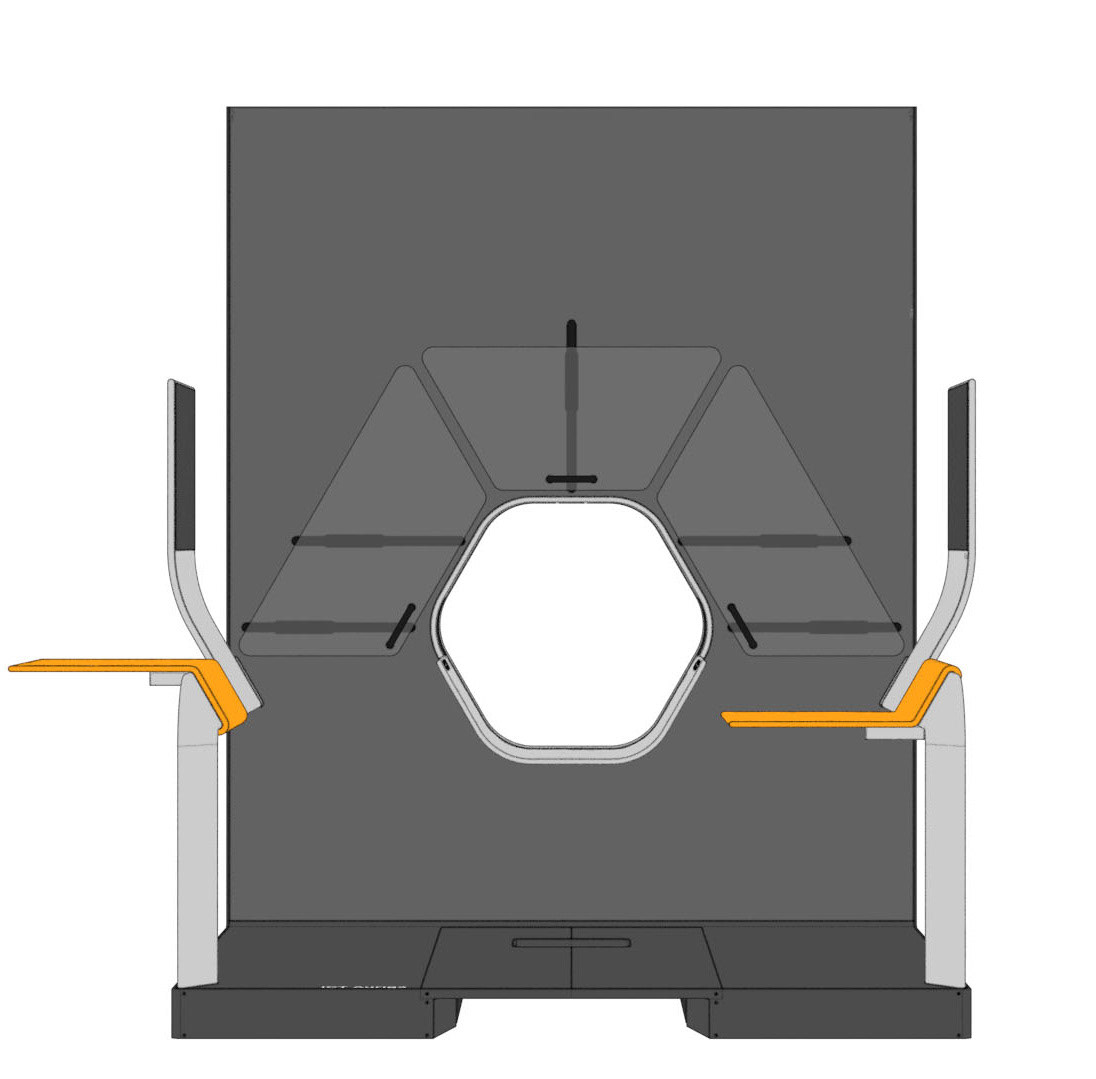
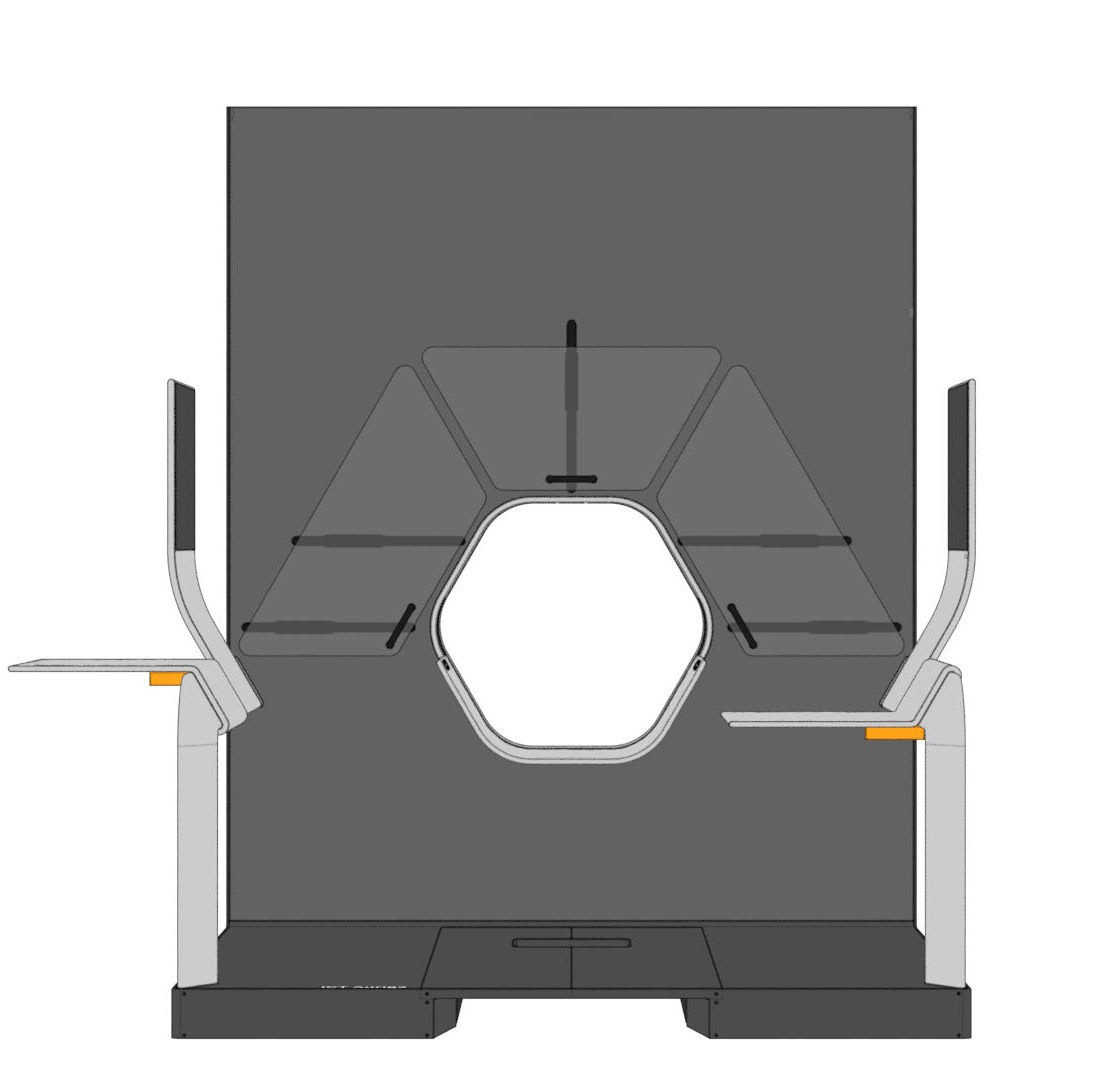
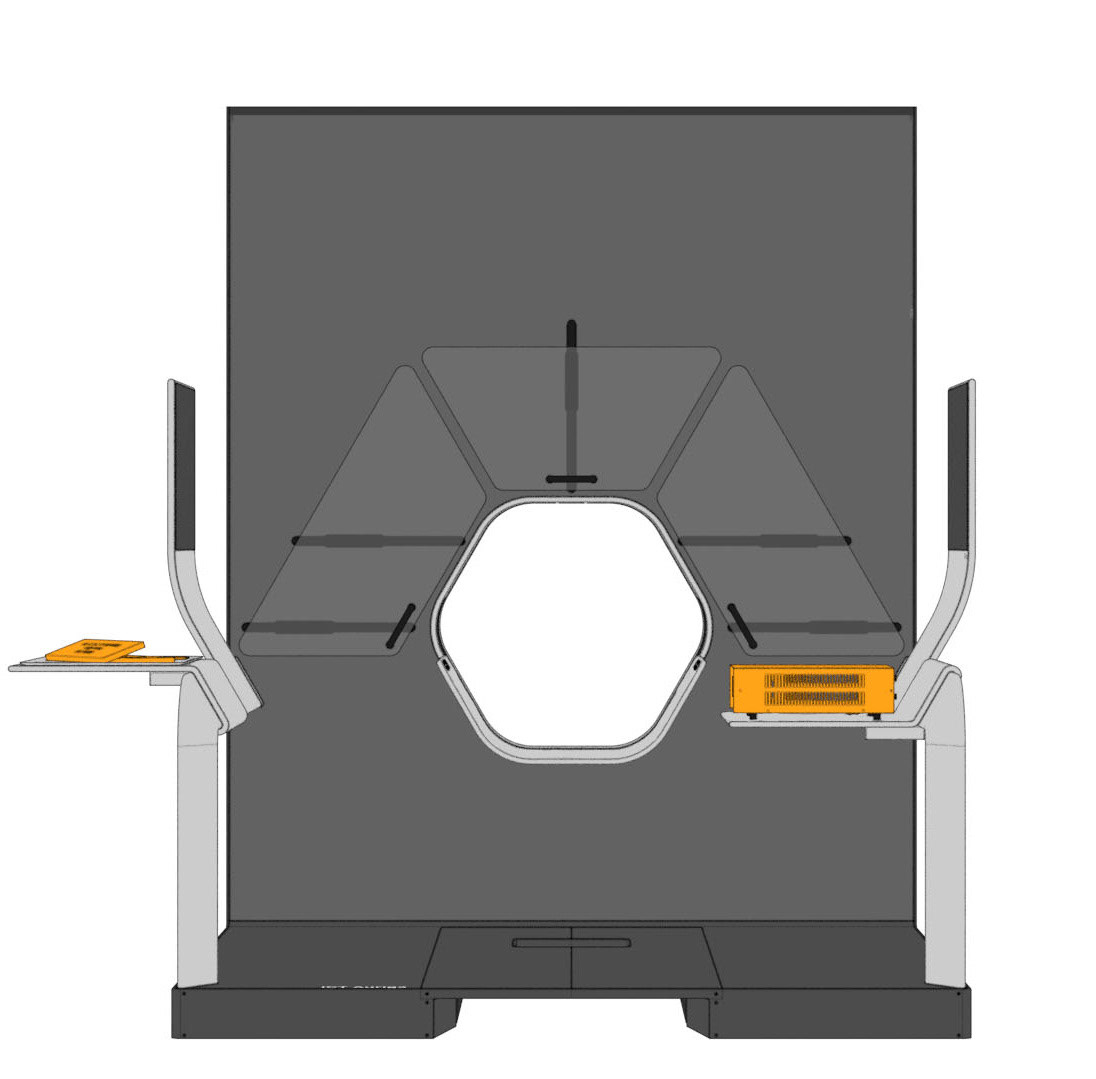
DESIGN
